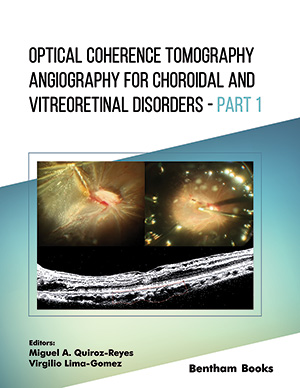Abstract
Optical coherence tomography (OCT) has proven to be an effective
diagnostic technique for evaluating ocular structures, particularly for studying retinal
layers and other areas of the posterior segment of the eye. The incorporation of
strategies and algorithms that allow the observation of the retinal microvasculature and
the flow of red blood cells currently represents important advances in the diagnosis and
treatment of inflammatory, neural, and vascular retinal diseases. The advantage is that
OCT is a non-invasive method that does not require the use of contrast dyes. For this
reason, OCT combined with angiography (OCTA) is one of the most important
techniques for the study of vitreoretinal disorders. Its optical principle, which is based
on the Doppler technique, allows us to understand how OCTA equipment acquires and
processes images to facilitate visualization and interpretation through their two- and
three-dimensional reconstructions. In addition, OCTA allows the identification of
signal alterations that could appear as artifacts on each tomography or angiographic
scan. This chapter aims to explore the characteristics and further applications of OCTA
in addition to its relevance in ophthalmological clinical practice.
Keywords: Algorithms, Angiography, Artifacts, Choriocapillaris, Contrast dye, Cross-sectional scans, Deep vascular plexus, Doppler technic, En face image, Foveal avascular zone, Image visualization, Inner limiting membrane, Interferometry, Interscan time, Optical coherence tomography, Red blood cells, Retinal layers, Retinal microvasculature, Retinal pigment epithelium, Signal intensity, Spectral domain, Spectrometer, Superficial vascular plexus, Vessel density, Vitreoretinal disorders.






















